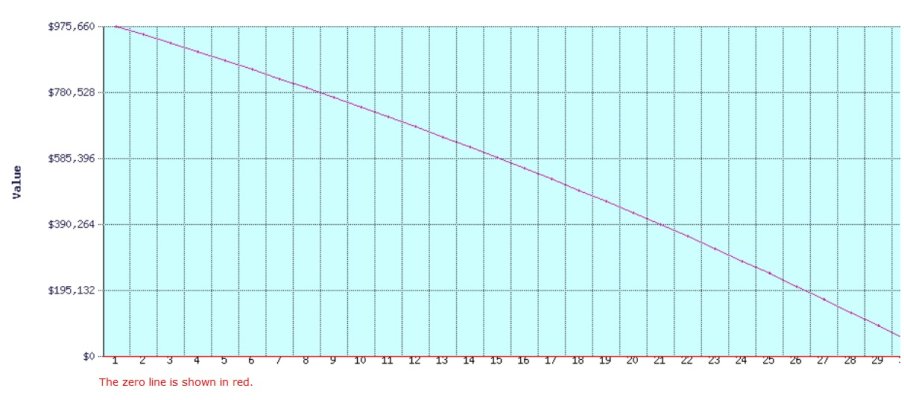I answered a question on Quora asking about a fixed 5% return and a 3% withdrawal.
In that scenario you will have almost half you money left after 30 years.
Then I pushed it and found if you invest at 5% and withdraw 4.12% your portfolio
will last just over 30 years.
I'm not recommending this, I just found it interesting and had never run FireCalc this way.
Graph shown below.
In that scenario you will have almost half you money left after 30 years.
Then I pushed it and found if you invest at 5% and withdraw 4.12% your portfolio
will last just over 30 years.
I'm not recommending this, I just found it interesting and had never run FireCalc this way.
Graph shown below.

